Micro growing cannabis: How to
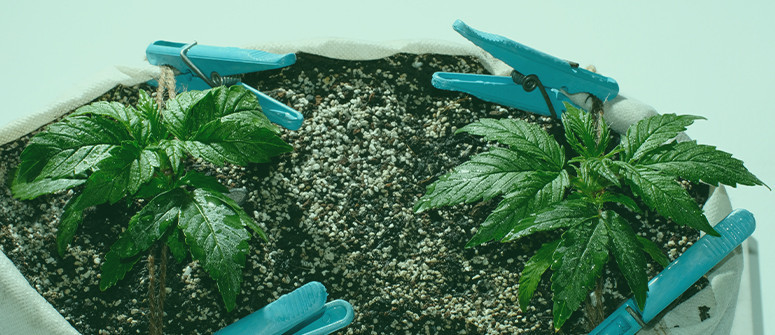
If you lack space but still want to grow weed, there are still options available to you—namely, micro growing. All you need is a little knowledge, and we're here to give you that! Read on for a complete guide to cultivating weed in a micro grow.
Contents:
Short on space, but still want to grow cannabis at home? Well, it’s very possible.
For many years, people have grown tiny cannabis plants in cupboards, with limited success. Nowadays, as techniques have become more widely shared and grow lights have become smaller and cooler, so-called “micro growing” is easier than ever—and can yield impressive results from some truly tiny plants.
In this article, we go in depth into micro growing cannabis, and show you how best to go about it.
What is micro growing cannabis?
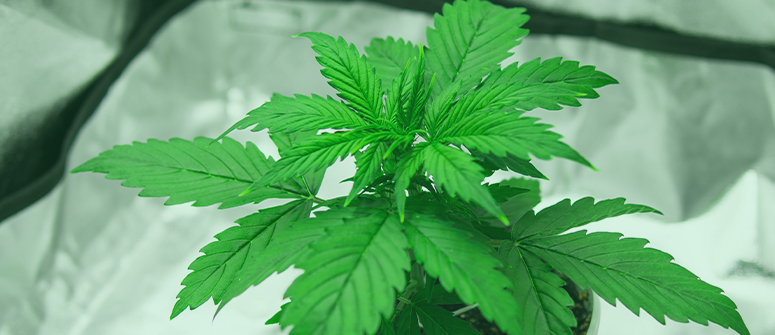
Micro growing means growing cannabis on a very small (or micro) level. In most cases, people opt to start a micro grow because it’s the only option available to them; they simply don’t have the space to grow full-size plants.
Micro grows, therefore, are less about growing small plants and more about growing cannabis plants in small places—thereby necessitating small plants. A mature cannabis plant grown under normal conditions will usually reach somewhere between 80 and 120cm indoors. This is great if you have the space, but not so much if you don’t.
A micro plant can top out at around 20–40cm, allowing it to be grown in all manner of spaces, such as cupboards or even computer towers. This makes it a particularly useful practice for people living in small spaces, such as one bedroom apartments without balconies or gardens. Of course, these smaller plants also produce significantly smaller yields compared to larger plants.
What are the benefits of a micro cannabis grow?
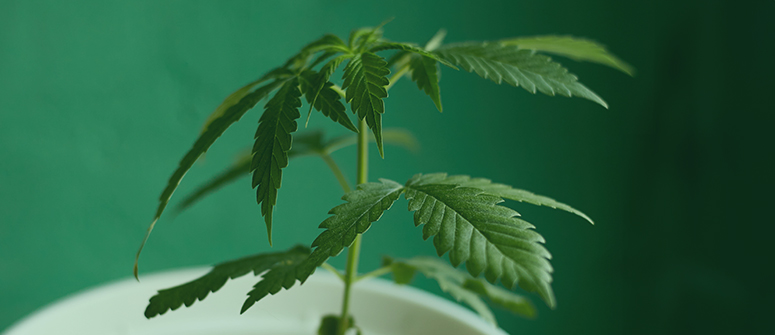
There are several benefits to a micro grow compared to a regular grow, not least of which being that you can grow cannabis in a very small space!
You can still grow great weed
Just because you’re growing smaller plants doesn’t mean you need to grow low-quality weed! The cannabis grown in a micro grow setup can be just as potent. The key, as with all cannabis cultivation, is to start off with high-quality genetics. From here, treat your plants well, give them plenty of light and enough true darkness (if you’re growing photoperiod strains), and suitable amounts of water and food; do this, and you can still grow top-shelf bud.
But, as mentioned, if you grow small plants, you have to accept smaller yields—it’s just how it is. Yields are commensurate with the size of the plant. So if you grow a plant with an estimated average height of 100cm, but only allow it to reach 25cm, then you can expect to get around a quarter (give or take) of the advertised yield.
Low costs
Generally, growing smaller plants incurs lowers costs. There are a few reasons for this.
Smaller plants require less in the way of soil and nutrients, so they cost less to sustain. Moreover, your lighting setup will be minimal, potentially reducing startup costs. And, instead of investing in a tent or setting up a grow room, you can instead just line a small space with aluminium foil or Mylar, saving a significant sum of money. Finally, small grows don’t tend to need the same degree of ventilation as larger ones, so you don’t need to invest in an intake/exhaust system.
A budget micro grow could cost as little as the price of seeds, pots, soil, fertiliser, and lights.
Less space required
It goes without saying that micro grows require far less space compared to normal growing. For many, this is exactly the reason that people choose a micro grow—out of necessity. This means of cultivation opens the door to those who can’t afford to dedicate a room, or the corner of a room, to a grow. So, for people with limited space, micro growing is the only feasible way to grow weed at home.
Easy
Growing in this way can be easier than larger grows. Not only are there fewer plants to tend to, but it’s generally less of an intensive operation. One small plant in a cupboard inevitably requires less effort than, say, five larger plants in a tent with a whole rig surrounding them and a ventilation system exchanging air.
Plus, keeping an eye on one small plant is much easier than doing so with several.
Discreet
Obviously, a tiny little setup in a miniscule place is much more discreet compared to a larger indoor setup, or pretty much any outdoor setup.
For those who want to grow a little weed for themselves at home, but really want to keep the risk of detection down to a minimum, then these sorts of micro grow setups can be really helpful to achieve that.
Faster
Micro grows can also speed up the process of growing photoperiod plants. To grow full-size plants indoors, growers usually let them veg for between 4 and 8 weeks before flipping them to flowering. This allows them to grow to a good size before they start producing flowers, allowing them to produce more bud in turn.
However, with a micro grow, you want your plants to remain very small, so you can flip them at around two weeks, saving you potentially more than a month of growing time. If you grow year-round, you can squeeze in an extra couple of harvests per year compared to normal growing by doing this, which goes some way to make up for the smaller yields per harvest.
How to micro grow cannabis
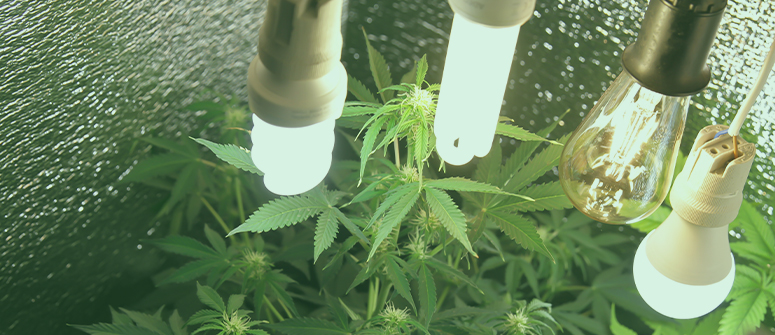
A micro grow generally requires quite an easy setup, which makes it a viable option even for those who have never tried growing weed before. In fact, it might be the perfect starting place, as it doesn’t require much in the way of a dedicated space, and allows you to focus all of your attention on a single plant to hone your growing skills.
There are a few variations of micro growing available, and below, we’ll go through each so you can choose the one that works best for you. Then, in the following sections, we’ll recommend some suitable strains.
But first, here are some general tips for micro growing:
- Use 3l pots: These are much smaller than the pots you’d use for any other grow. Smaller pots restrict the size of a plant’s root system, which in turn restricts the maximum size the plant can reach.
- Use LED lights: In a micro grow, the lights will be very close to the canopy of the plant, which makes burning more likely. LED lights emit almost no heat, and therefore largely mitigate the risk.
- Allow for some ventilation: There’s no need to instal a ventilation system, but consider making holes in the cupboard/computer tower, or open a door a few times day to allow for sufficient air exchange.
- • Water regularly: Smaller pots mean less soil, which in turn means less water retention. Smaller pots will dry out faster, so check the topsoil regularly, and if it’s dry, give the plant a little water.
- • Give your plants less fertiliser: The suggested ratio of fertiliser given on a bottle will assume you’re growing full-size plants. Smaller plants need less in the way of food, so you can significantly reduce the amount of fertiliser you give them.
With all of the following options, it’s possible to grow using either soil or a hydroponic setup. A soil grow is the most straightforward, and the best option for novices. But if you want to try something a little trickier, then all of these methods can be adapted to work with hydroponics.
In a computer tower
One option is to grow in a desktop computer tower. This demonstrates just how small a micro grow can be—and how discreet too!
The challenge here is finding LED lights that are designed for growing cannabis (normal LEDs don’t have the right spectrum) but will still fit in a computer tower, while leaving enough space for your plants.
An upside of this method is that you can install a computer fan, designed for cooling the hardware in the tower, and use it to pull old air out and new air into the grow, which makes for a very handy ventilation system. Though not necessary, this will improve the little ecosystem you're creating for your plants and reduce the chances of mould developing.
It’s also possible to buy kitted-out computer towers designed with exactly this purpose in mind. While this is less budget-friendly and takes away the DIY aspect of the grow, it does make life easier and guarantees a good environment in which to grow cannabis.
In a closet
Probably the most popular micro growing method: growing in a closet, wardrobe, or cupboard! Most people already have these in their homes, and if you can clear out a bit of space in one, then why not grow a weed plant there?
Again, start by finding some small, full-spectrum LED lights. Then, line the cupboard with either aluminium foil or Mylar to reflect errant light back toward the plant and ultimately help it to grow more vigorously. Regarding ventilation, you can do as little as drill some holes in the door, or even just open the door a few times a day. You could also rig up a fan or ventilation system if you want to get more serious about your grow—but this (likely) isn’t necessary.
In a small grow tent
You can also buy or build very small grow tents, which are designed to fit lights and one small plant. These can then be put wherever is most convenient. Purpose-built grow tents are helpful as they have all the necessary rigging capabilities, vents and openings, and insulated walls.
However, if you’re growing on a very tight budget, then a small tent may not be the best option for you.
In a stealth grow box
You can also buy specially made stealth grow boxes. These are similar to computer towers (and may even be made from them), but are kitted-out to keep your grow as lowkey as possible. They are insulated to stop sound from escaping, have a ventilation system to capture odour, and are generally very discreet.
They can be pricey, though, so if total stealth isn’t of the utmost concern, there might be better options.
A note on the bloom phase
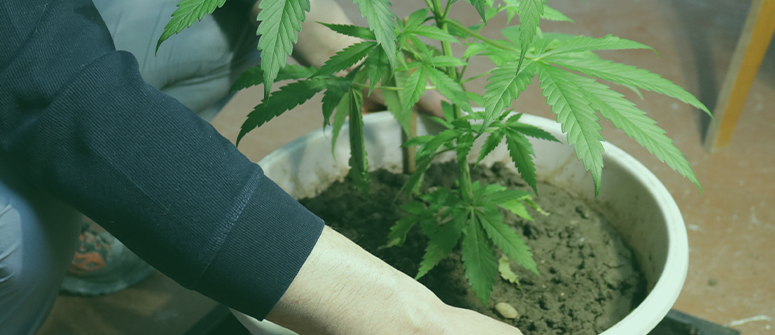
Unless you’re growing autoflowering plants (which is indeed advisable), you’ll need to “flip” your plants over to the flowering stage at some point. With a micro grow, as mentioned, this can be done within around two weeks of seedlings emerging.
To trigger flowering, most growers move from an 18/6 to a 12/12 light cycle. This means 12 hours of light and 12 hours of darkness. It’s very important to ensure that the hours of darkness are truly dark. Light leaking in can cause your plant to revert back to the vegetative stage, which will cause it lots of stress. If your plant gets too stressed, this will negatively impact the quality of the bud, and maybe even kill it, so let it rest!
For this reason, choosing an autoflowering plant—which will move to the bloom phase of its own accord—may be more suitable for the nature of a micro grow.
Techniques to optimise your micro cannabis grow
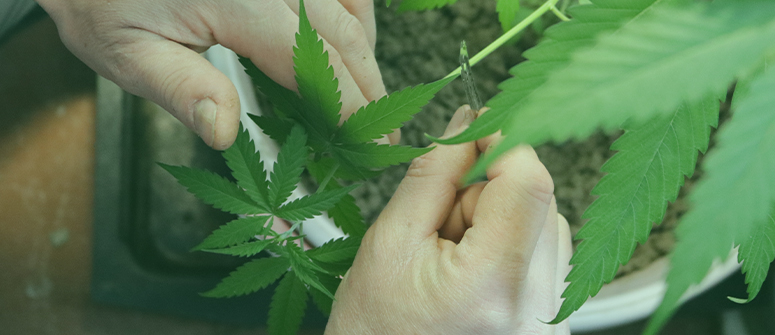
Many who grow on a micro scale will just put their plants in a small pot and let them grow naturally. However, it’s possible to employ training techniques to increase the weight of your yield, limit plant height, and make the whole enterprise even more profitable.
LST
Depending on the space available to you, you might be able to cram a few plants in. In this case, you can use a technique called Sea of Green (SOG). If you’re only growing a single, small plant, however, this technique doesn’t really apply.
You could also use low-stress training. This involves bending the main stem of a plant during the vegetative stage and tying it down to encourage lateral, rather than vertical, growth. This distributes the available light more efficiently across the plant and encourages greater bud growth, resulting in a larger yield per plant. Another useful LST method is the ScrOG (Screen of Green).
HST
You could even use high-stress training (HST) on your plants in hopes of increasing the yield. If you’re growing autos, stay away from HST, as it will do more damage than good.
There are three types of HST you could use:
- Schwazzing: This involves removing almost all fan leaves from the plant. While this may sound counterproductive, it can actually increase the final yield of a plant dramatically.
- Topping: With this method, you cut off the main stem at the top of the plant (during the veg stage), and from it spring back two new main stems—thereby doubling the largest bud site on the plant.
- Super cropping: This method involves pinching and bending the branches of your plant during the veg stage. The stress caused by this encourages your plant to come back stronger and produce more bud sites.
Best strains for micro growing cannabis
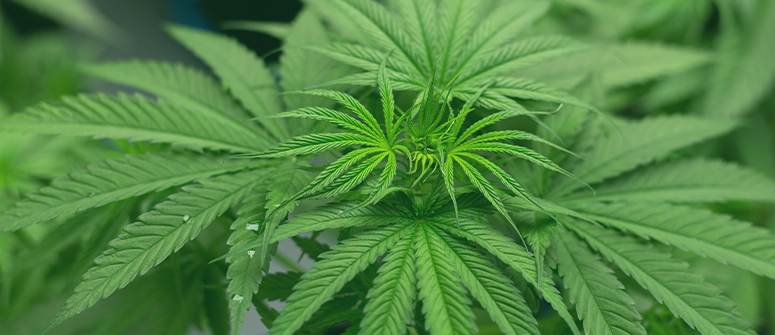
So, if you’re into the idea of a micro grow, you’re probably wondering which strains will suit it best. Though you can restrict the growth of any strain, you’ll get much better results if you start off with plants that naturally stay low. If you try to grow a monstrous sativa in a micro grow, it’s going to struggle, and you’ll likely get poor results.
Here are three great cannabis seeds for your next micro grow. All of these plants are autoflowering, meaning you don’t have to worry about changing the light cycle to induce flowering.
Royal Dwarf
This is an autoflowering Skunk plant that can produce around 60g/plant. The good news is that a full-sized plant is between 40 and 60cm, so adapting it to a micro grow should be no issue. Royal Dwarf was bred to grow small and still produce impressive yields. For this reason, if you’re into dank, skunky weed and want to produce it in the smallest of settings, Royal Dwarf is the perfect option!
Auto Banana Blaze
At full size, Auto Banana Blaze can reach 100cm and produce impressive yields of around 400–500g/m². To grow it in a micro grow, you’ll need to restrict its growth somewhat, but it should still fare very well under these conditions. If you want to grow an indica-dominant and very fruity strain of cannabis, there are few better options than Auto Banana Blaze.
Auto Blackberry Kush
If you prefer berries over bananas, then why not go for Auto Blackberry Kush? This indica-dominant strain of cannabis produces purple flowers and moderate levels of THC. Expect fruity flavours that satisfy the palate and produce warming aromas. For a relaxed high with a light body buzz, look no further!
Micro growing: small plants, quality buds
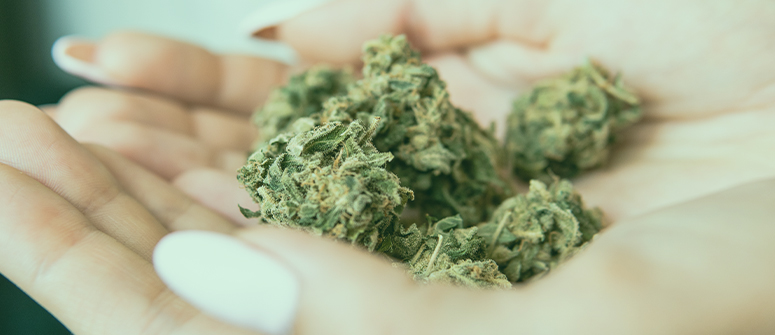
If you’re short on space, don’t despair, just set up a micro grow!
This cultivation method provides an opportunity for those with even the smallest of spaces to grow great weed at home. A cupboard, computer tower, or any other small space you can think of will suffice, so long as you kit it out with lights and take the necessary precautions. Just because these plants are small, don’t think they won’t still produce a decent amount of high-quality bud, because they really can!
.jpg)
.jpg)

.jpg)
